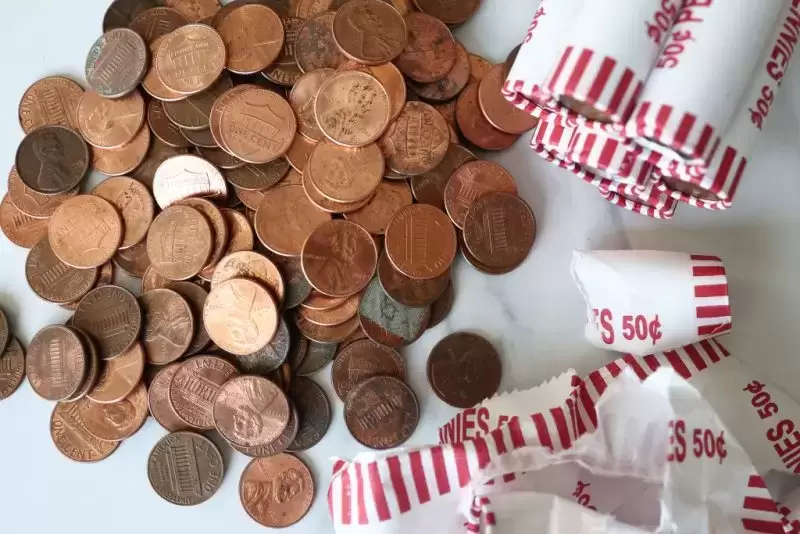 |
|
 |
|
 |
|
 |
|
 |
|
 |
|
 |
|
 |
|
 |
|
 |
|
 |
|
 |
|
 |
|
 |
|
 |
|
Cryptocurrency News Articles
Congress Introduces Bipartisan Bill to Stop Production of Pennies
May 07, 2025 at 04:15 am
SALT LAKE CITY (KTVX) — Yet another piece of legislation targeting the penny has been introduced in Congress, offering insight into the renewed fight to ditch our one-cent coin.

A bipartisan bill introduced last week by Sens. Mike Lee (R-Utah) and Jeff Merkley (D-Oregon) would also put an official end to the production of one-cent coins.
The bill, named “Make Sense, Not Cents,” would also reportedly adjust a portion of a 2011 law that put a limit on the production of one-cent coins based on the rate of inflation.
That 2011 law was part of a broader effort to reduce the federal deficit, and it mandated that the U.S. Mint cease production of one-cent coins if the difference between the cost of producing them and the face value of the coins rose above 100 percent. At the time, the cost of producing a single penny was 0.8 cents.
However, by 2022, the cost of producing a single penny reached 3.69 cents — the most it has ever cost, according to the latest report from the U.S. Mint. That means the cost of producing a single penny has now more than quadrupled since 2011.
In a statement, Sen. Lee said, in part, “No private business would produce something at a 4x loss. It’s time to stop wasting Americans’ hard-earned tax dollars making overpriced pennies. We should be focused on the things that matter, like keeping our economy strong and tackling inflation.”
A halt in penny production may sound like it would create a high demand for the no-longer-made coins, but experts at All About Coins in Salt Lake City said they don’t foresee a spike in the value of Abraham Lincoln’s coin.
“I don’t think that we’re ever going to see a day where like a 2024 penny is going to be worth so much more. Maybe in 200, 300 years, but not in my lifetime,” store clerk Casey Hackford-Peer explained.
However, he noted that some rare finds can be worth some serious coin. For example, Hackford-Peer showed off a 1909 S “VDB” cent, which can be worth hundreds and sometimes thousands of dollars. It’s a penny that still has the artist’s initials minted on it, making it worth upwards of $750,000. Another, minted in Denver in 1943, sold for $840,000 in 2021, according to a listing by Heritage Auctions.
These pennies are known as “wheat pennies” after the sheaves of wheat on the backs. Produced from 1909 to 1958, wheat pennies have been known to sell at auctions for thousands of dollars. One from 1944 — made entirely of steel, giving it a silver appearance instead of copper or bronze — sold at auction for $168,000 in January. A highly graded wheat penny from the 1909 series recently sold for $99,000 at auction.
The pennies sitting in your piggy bank or lost in your couch cushions are likely not as valuable. They may, however, still be useful for your cash purchases.
Earlier this year, another bill was introduced in Congress that would essentially replicate what Canada did when it eliminated its one-cent coin: the one-cent coin remains legal tender, but cash transactions are rounded up or down to the nearest five cents.
According to a 2023 report by the U.S. Mint, the average adjustment to a cash transaction would be 1.6 cents. In total, rounding up cash transactions would generate an annual net savings of $200 million for businesses, according to the U.S. Mint.
The bill, H.R. 3407, was referred to the House Committee on Financial Services earlier this year.
Disclaimer:info@kdj.com
The information provided is not trading advice. kdj.com does not assume any responsibility for any investments made based on the information provided in this article. Cryptocurrencies are highly volatile and it is highly recommended that you invest with caution after thorough research!
If you believe that the content used on this website infringes your copyright, please contact us immediately (info@kdj.com) and we will delete it promptly.
-

-

-

-

-

-

- EOS is making headlines again after increasing by over 15% in the past 24 hours.
- May 08, 2025 at 06:30 am
- The latest price action, along with volume data and technical patterns, suggests that the cryptocurrency may have more room to run. Subsequently, it could see another 18 to 20% move in the near future.
-

-

-




























































